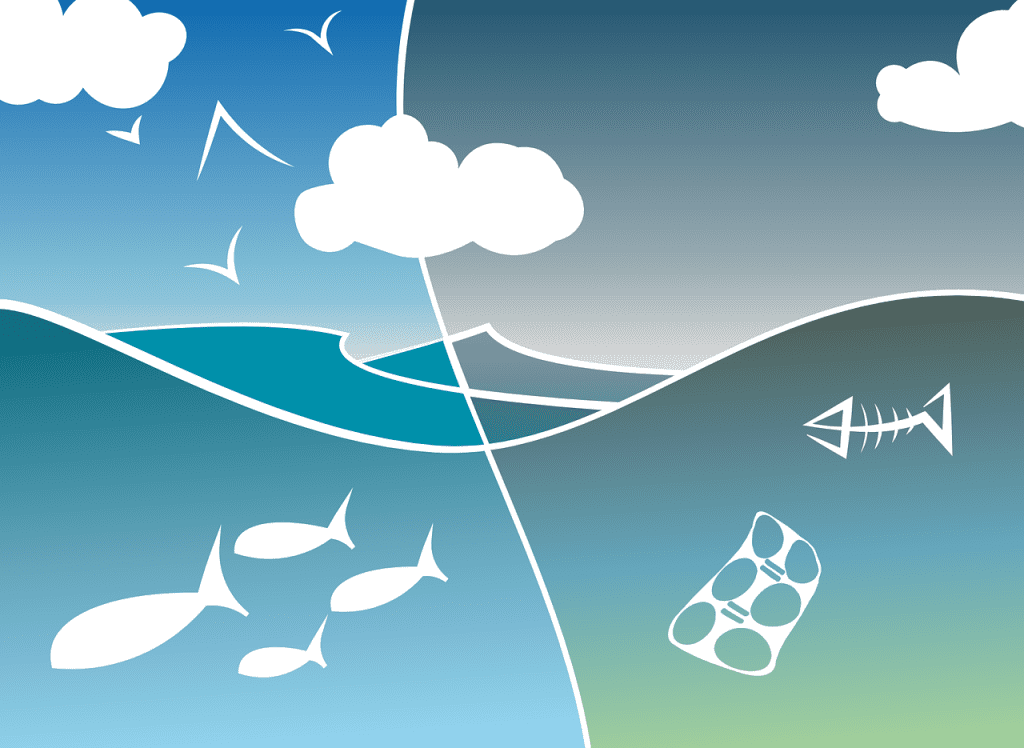A lot of people are attracted by biodegradable packaging because the they feel these are more environmentally friendly. But this is actually debatable. Yes, a biodegradable bag will break down in a couple of months versus hundreds of years as is the case with its synthetic counterpart. However, for this reaction to happen, oxygen and light is required, both in low supply once biodegradable packaging reaches the ocean. According to a 179-page report released by the U.N., biodegradable plastics degrade far too slow in the oceans, voiding any apparent practical benefit. In the ocean at least, they’re just as bad, if not worse in some instances, than traditional plastics.

“Weathering and oxo-fragmentation is enhanced by exposure to UV irradiation. The process becomes extremely slow once this is removed, as in much of the ocean. Plastics marked as ‘biodegradable’ do not degrade rapidly in the ocean,” the report reads.
Plastics are carbon-based polymers (long-chain molecules that repeat their structures over and over) and we make them mostly from petroleum. They’re very versatile and durable, so there’s no wonder these have been employed to an ever growing extent since the ’50s. The problem we have with plastics today is that they’re too good — too durable, to be more precise. That wouldn’t have been a problem if society didn’t use an extremely resilient material for disposable applications like packaging, wraps and bags.
That’s why biodegradable plastics entered the picture. Instead of petroleum products, which have very strong bonds that are hard to break chemically, biodegradable plastics are made out of natural material like corn starch. The degrees of degradation varies from product to product depending on the environment they’re designed to be disposed in, ranging from inside the human body to inside an industrial composter.
[SEE] If there’s anything that marks humanity’s brief time on Earth, it’s plastic
Such conditions, however, do not exist in the marine environment.
“Some common nonbiodegradable polymers, such as polyethylene, are sometimes manufactured with a metalbased additive that results in more rapid fragmentation (oxo-degradable). This will increase the rate of microplastic formation, but there is a lack of independent scientific evidence that biodegradation will occur any more rapidly than unmodified polyethylene. In a recent UNEP report it was concluded that the adoption of products labelled as ‘biodegradable’ or ‘oxo-degradable’ would not bring about a significant decrease either in the quantity of plastic entering the ocean or the risk of physical and chemical impacts on the marine environment, on the balance of current scientific evidence (UNEP 2015a). In addition, mixing of such plastics with normal plastics in the recycling stream may compromise the properties of the newly synthesised polymer22,” the authors wrote.
Around 300 million tonnes of plastic are manufactured each year. Only a fraction is recycled, the rest ending up in landfills, waterways and oceans. Plastics pose a great threat to marine life. The sight of suffering wildlife entangled and suffocating with plastic debris is a common reality. Microplastics — plastic particles smaller than five millimeters — are arguably the worse because these become easily ingested. This is why toothpaste, cosmetics, cleansing agents and skin exfoliators which contain plastic microbeads were banned in California last year. Not only isn’t there any evidence that biodegradable plastics break down fast enough in the open ocean, where they sink and can’t reach the necessary temperature to decompose, but when they do break down they form these micro particles.
The authors of the U.N. report say that the only sustainable solution to managing plastic waste is to properly collect, dispose and recycle.
“There is a moral argument that we should not allow the ocean to become further polluted with plastic waste, and that marine littering should be considered a ‘common concern of humankind,’” the report says.






